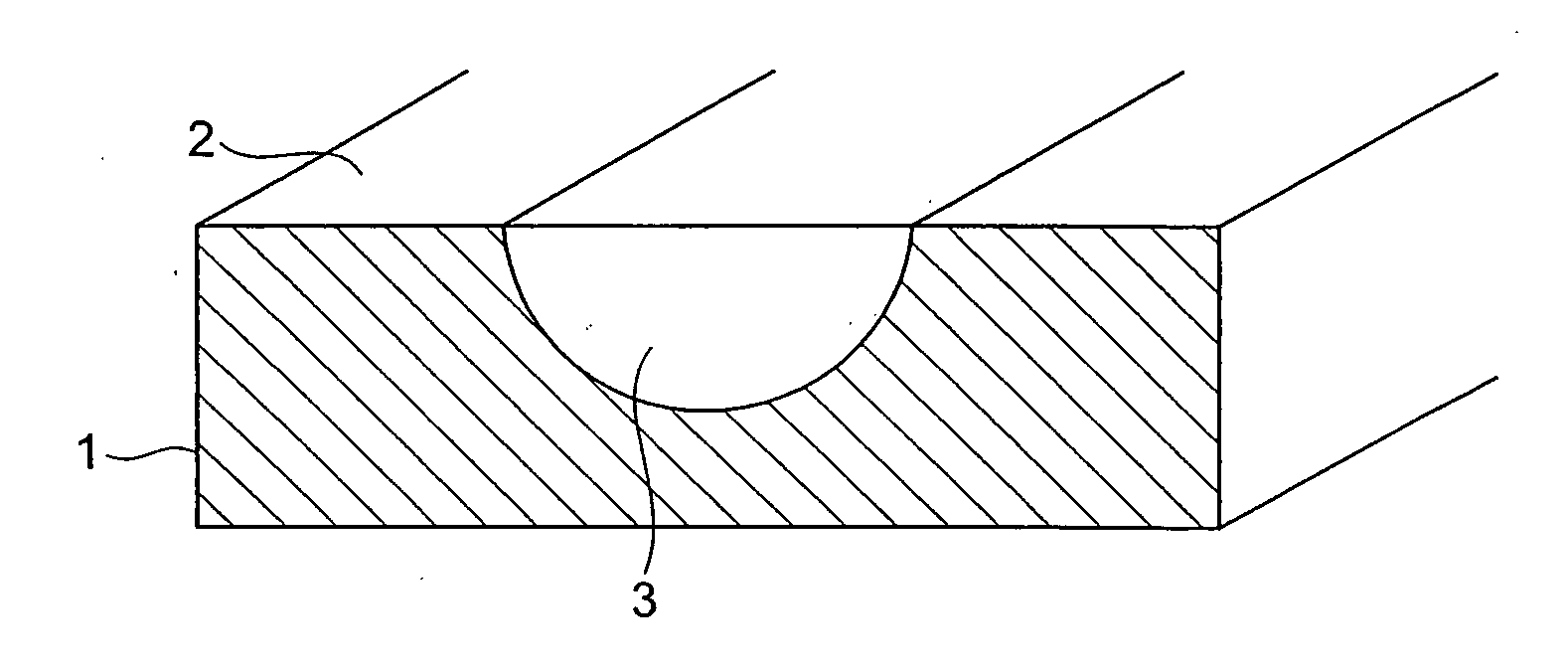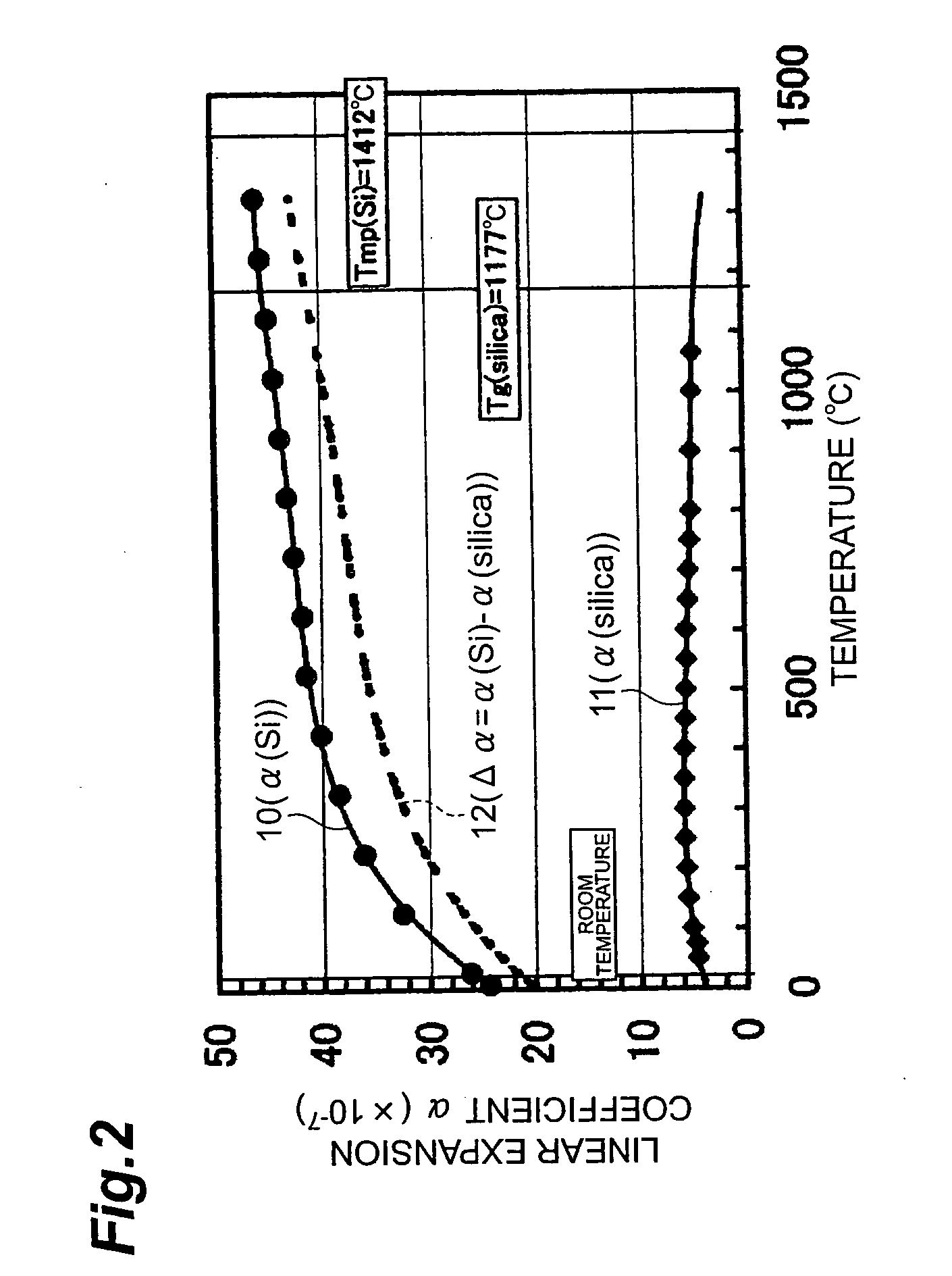Silicon Substrate and Method of Forming the Same
a technology of silica glass and substrate, applied in the field of silicon substrate, can solve the problems of describing nothing about the variation in the expansion coefficient of silica glass, and the further decrease of the melting temperature of fluorine, so as to prevent the occurrence of defects
- Summary
- Abstract
- Description
- Claims
- Application Information
AI Technical Summary
Benefits of technology
Problems solved by technology
Method used
Image
Examples
examples
[0066] Described below in detail with examples are cases of applying the Group 1a alkali metal oxides such as Li2O, Na2O, K2O, Rb2O, and Cs2O and the Group 2a alkaline earth oxides or the like such as MgO, CaO, SrO, and BaO being the network modifiers (NWM), to the present invention.
[0067] These alkali metals or alkaline earth metals react with various acids to form salts. Typical examples of the acids herein include hydrides of the halogen family of elements such as fluorine, chlorine, bromine, and iodine, nitric acid, sulfuric acid, phosphoric acid, boric acid, carbonic acid, oxalic acid, and so on. It is known that the salts of the above metals and the acids are dissolved in various solvents. Described below in particular are cases where the solvent is water. All of these salts are well dissolved in water. Particularly, an aqueous solution of nitrate or sulfate does not dissolve porous silicon (PS) or porous silica, and, therefore, they are particularly preferred salts in implem...
PUM
| Property | Measurement | Unit |
|---|---|---|
| glass transition temperature | aaaaa | aaaaa |
| transmission loss wavelength | aaaaa | aaaaa |
| viscosity | aaaaa | aaaaa |
Abstract
Description
Claims
Application Information
 Login to View More
Login to View More - R&D
- Intellectual Property
- Life Sciences
- Materials
- Tech Scout
- Unparalleled Data Quality
- Higher Quality Content
- 60% Fewer Hallucinations
Browse by: Latest US Patents, China's latest patents, Technical Efficacy Thesaurus, Application Domain, Technology Topic, Popular Technical Reports.
© 2025 PatSnap. All rights reserved.Legal|Privacy policy|Modern Slavery Act Transparency Statement|Sitemap|About US| Contact US: help@patsnap.com



